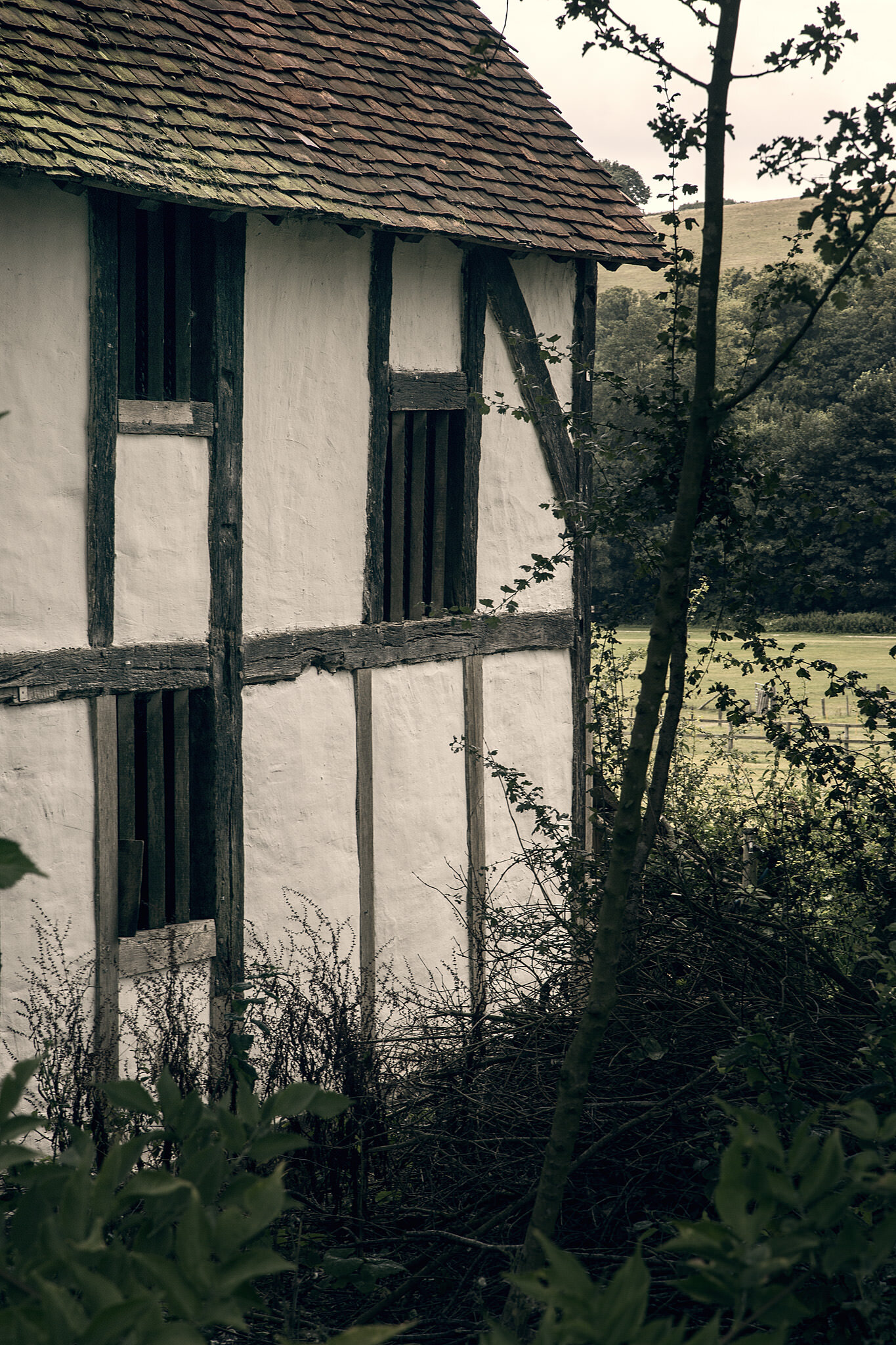Weald & Downland Living Museum, South East England
The Weald and Downland museum was started in 1967 and opened to the public in 1970. It was created to rescue good examples of vernacular architecture, humbler buildings, such as farmhouses and town or village houses that would otherwise be destroyed. The purpose was to save them and to re-erect them painstakingly, in as close to their original form as possible, at the museum. The site, of 35 acres, would be able to house some 50 buildings, which, by careful selection, would be able to illustrate the history of vernacular architecture in the Weald and Downland areas of England, (the south-east) from the middle ages to the early 19th Century.
The museum’s intention was to showcase traditional crafts and trades of the region, as well as its social history. It was begun primarily as an exercise in the preservation of local history. The museum has always tried to keep the buildings in situ but sometimes their removal is the best solution, although the museum does not accept any building until destruction is inevitable. The museum’s purpose is also intended to spark an interest in local history, traditional skills and English vernacular architecture. By raising awareness it is hoped that more people will take an interest in the preservation of their own local history.
The museum is a registered non-profit organisation and raises all it's funds without grants or subsidies. The land has been leased from the Edward James Foundation, at a peppercorn rent and it truly is a magnificent location, as nothing modern can been seen from the site. The open meadows and woodlands, are the ideal setting for these buildings and they look very natural in their new location. The museum also makes an effort to teach the public about the materials that were used to create these buildings and supports the efforts of local craftsmen who want to learn these skills.
Every building at the Weald and Downland museum has its own story. The medieval house of Winkshurst, once stood in the middle of what was to become a new reservoir for the East Surrey Water Company, who presented the house to the museum in 1967. This was the first building which was relocated to the museum. The house dates back to at least the 14th Century. It is a small farm house of two bays, with the hall at one end with its central hearth open to the roof, the other bay has a ground and first floor level. The house is constructed of wattle and daub infill, with an oak frame. The wattle being the woven lattices of wood, often hazel sticks, set within the frame and over this was placed the daub, which was a combination of mud or clay, mixed with sand, straw and often cow poo to bind it. The material that made up the daub differed by region, but it was a cheap plaster that did not require lime, although lime was sometimes added to the mix. This would be applied by hand to the wattle and smoothed with a wet sponge or cloth. We may not love the idea of adding cow poo today, but this mixture has lasted on walls for hundreds of years and is entirely sustainable. When it needs to be renewed, the old daub can be remixed into the new mixture, which will again last for hundreds of years.
Walderton House’s exterior dates from the 17th Century, but this was built over a medieval, timber framed, open hall house. The medieval house originally contained a ground floor room and cross passage, and one bay with a hall, open to roof height. The medieval roof was retained in the 17th Century but the hall was altered when a new upper floor was inserted, as well as a large brick chimney. The house is shown as it was after the 17th Century alterations.
Another building that was presented to the Museum, by the East Surrey Water company, that was on reservoir land, was Bayleaf Farmhouse. This medieval farmhouse, dates from between 1420 and 1480. The open hall and hearth, were still the central feature. This farmhouse has a jetted first floor to the front. We don’t know exactly when jetting first appeared in England, but it is likely to have started in the congested cities and began as a way of maximising the amount of floor space that could be built, while using the smallest amount of land possible. It became fashionable and this was the reason for it's use here.
The museum now has a 17th Century, working watermill and they often have demonstrations on traditional cooking, domestic and craft skills. They have also begun to teach courses on the conservation of historic buildings, to both children and adults. The museum has been a complete success and has expanded into collecting artefacts, which has grown to over 15,000 items.









